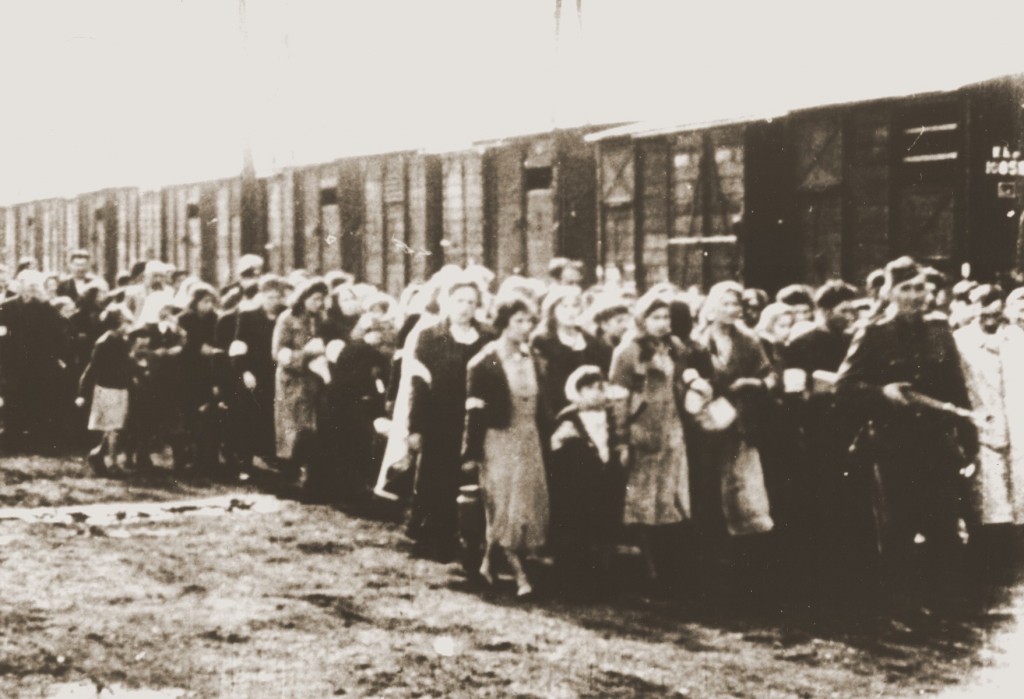
Agudat Israel (in Yiddish, Agudas Yisroel) was a political party founded in Kattowitz in Poland in 1912 to represent Orthodox Jews. Although the founding conference of the primary political part of Orthodox Jewry took place in May of 1912, the serious organization of Agudat Israel in Poland began in 1916. It was internal Jewish developments, rather than external factors, which spurred the anti-Zionist Orthodox to organize politically for the first time. Agudat Israel represented Jews who wished to regulate all aspects of life according to tradition, with the assumption that this obligated Jews to manifest strong loyalty and peace toward the state in which they lived. Agudat Israel, therefore, felt threatened by Zionist activity (including that of the religious Zionist party, Mizrachi), its culture and nationalism, as well as by the Bund's secularist understanding of its mission.
Word meaning "ascent." It refers to Jewish immigration to the land of Israel.
Youth group affiliated with Revisionist Zionism established in 1923 in Riga. The name Betar was formed from the initials of Brit Yosef Trumpeldor, Joseph Trumpeldor Alliance.
A facility containing a furnace for reducing dead bodies to ashes by burning.
The Gestapo (Geheime Staatspolizei) was the German Secret State Police, which was under SS control. It was responsible for investigating political crimes and opposition activities.
"Preventive arrest" (Vorbeugungshaft) was an instrument of detention that permitted criminal police detectives to take persons suspected of engaging in criminal activities into custody without warrant or judicial review of any kind. Preventive arrest usually meant indefinite internment in a concentration camp.
"Protective Custody" (Schutzhaft) was an instrument of detention that permitted secret state police detectives to take persons suspected of pursuing activities hostile to state interests into custody without warrant or judicial review of any kind. Protective custody most often meant indefinite internment in a concentration camp.
Reich Commissariat Ostland (Reichskommissariat Ostland) was a German civilian occupation region that included the Baltic States and most of Belarus.
The Reich Law Gazette (Reichsgesetzblatt) was the legal register for the Reich since 1871. Since 1922 the Gazette had two parts: Part I contained laws, decrees, and rulings having the force of law, and Part II contained international treaties and agreements between the German Reich and other states.
The Reichsgericht was the National Supreme Court of Justice (the highest tribunal in Germany), established in Leipzig, Germany, by the Court Organization Act of 1877.
Roma are a European ethnic group whose ancestry can be traced to modern-day India and Pakistan. Many Romani groups refer to themselves by different names, such as Sinti, Kalderashi, or Lalleri. Sinti are Roma with historical roots in German-speaking lands. In many languages, Roma are often referred to by exonyms (names or labels assigned to a group or place by outsiders). In English, this word is “Gypsy,” which is generally considered derogatory.
During the Nazi period, German authorities and their allies throughout Europe subjected entire Romani communities to systematic racial persecution. Romani communities across the continent were decimated.
The Special Court (Sondergericht) or tribunal for minor political crimes was established in each Superior Court district by federal law on March 21, 1933. Defendants convicted for offenses before the special courts had no right of appeal.
The People's Court (Volksgericht) was a Nazi court with jurisdiction over treason and other politically motivated crimes. It dealt summary justice without right of appeal to all those accused of crimes against the Führer, Adolf Hitler, and against the government of the Third Reich.
The Warthegau (formally, Reichsgau Wartheland) was a Nazi administrative unit governing part of German-occupied Poland during World War II (1939–1945). It included the Polish cities of Poznań (in German, Posen); Łódź (renamed Litzmannstadt by the Germans); and Inowrocław (in German, Hohensalza). In 1939, this area was home to about five million people, including about 4.2 million non-Jewish (ethnic) Poles; some 400,000 Jews; and 325,000 ethnic Germans. Nazi Germany annexed the territory of the Warthegau to the Greater German Reich. As part of the Nazis’ desire to acquire “Lebensraum” (“living space”), Nazi authorities were determined to Germanize the Warthegau. Germanizing the Warthegau meant ethnically cleansing the territory by deporting, imprisoning, and killing Polish and Jewish people whose families had lived there for centuries. In December 1941, Nazi German authorities established the first functioning Nazi killing center, the Chełmno killing center to murder Jewish people living in the Warthegau.
We would like to thank Crown Family Philanthropies, Abe and Ida Cooper Foundation, the Claims Conference, EVZ, and BMF for supporting the ongoing work to create content and resources for the Holocaust Encyclopedia. View the list of donor acknowledgement.